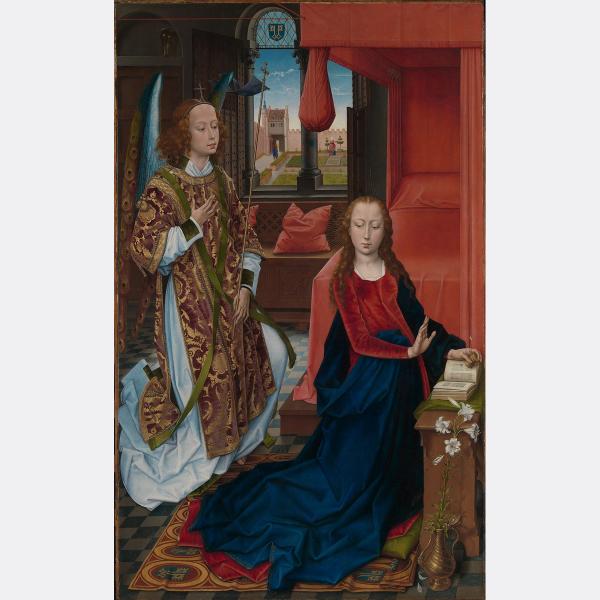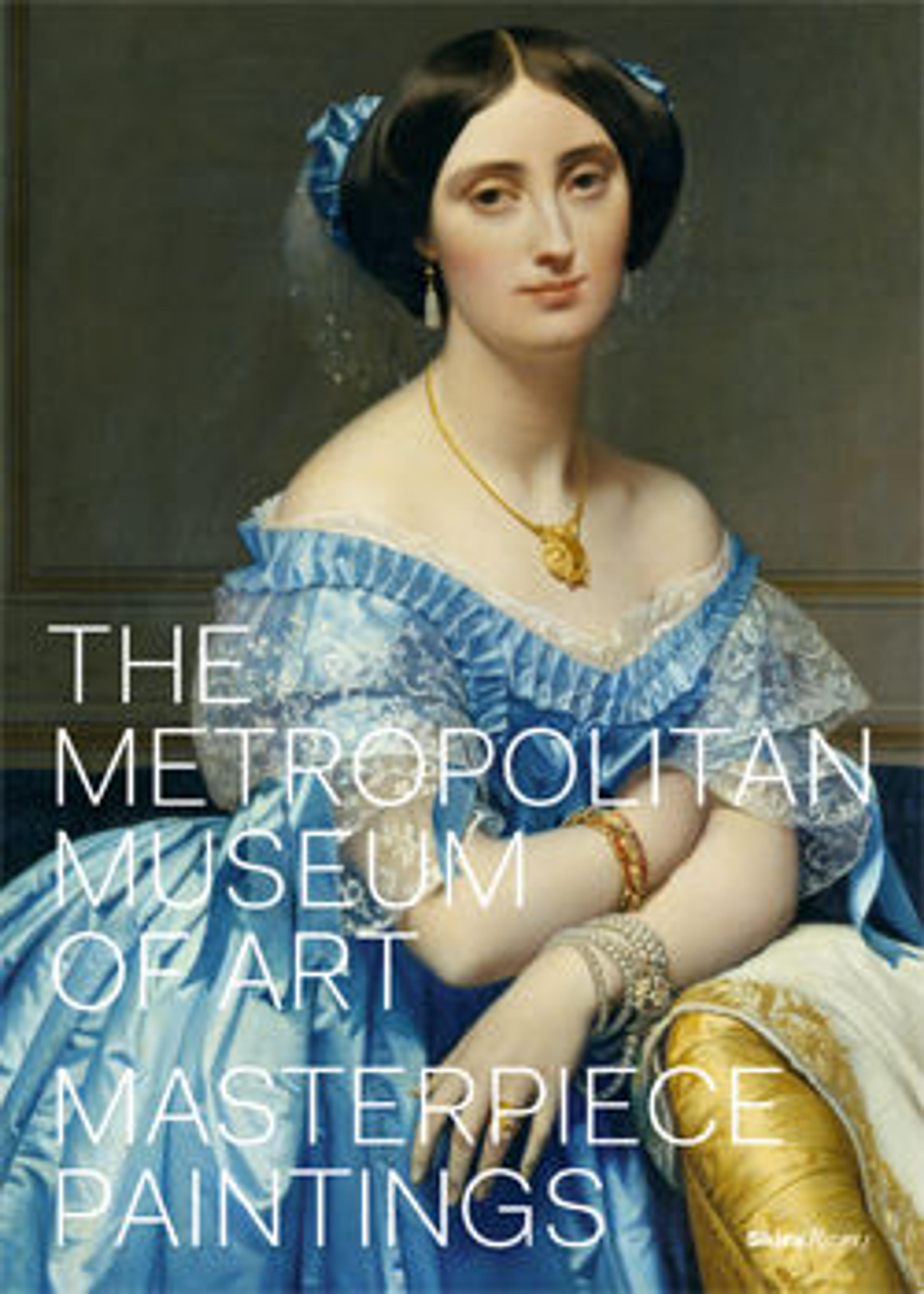The Annunciation
Artwork Details
- Title: The Annunciation
- Artist: Hans Memling (Netherlandish, Seligenstadt, active by 1465–died 1494 Bruges)
- Date: ca. 1465–70
- Medium: Oil on wood
- Dimensions: 73 1/4 x 45 1/4 in. (186.1 x 114.9 cm)
- Classification: Paintings
- Credit Line: Gift of J. Pierpont Morgan, 1917
- Object Number: 17.190.7
- Curatorial Department: European Paintings
Audio

5224. The Annunciation
Hans Memling, 1465-70
DR. ORNA GURALNIK: What strikes me in particular about this painting is I know it's supposed to be a miraculous moment, but it feels somber.
NARRATOR: We’re witnesses to a very intimate moment: the angel Gabriel is telling the Virgin Mary that she will give birth to the son of God.
DR. ORNA GURALNIK: And Gabriel almost seems to me almost apologetic that he's delivering this weighted news to her about this [laughs] miracle that's happening.
My name is Orna Guralnik. I am a clinical psychologist and a psychoanalyst, and the therapist on Showtime’s Couples Therapy.
The gaze down, the submission, it feels to me like it's all about submission rather than about joy. And this interesting gesture with her hand, almost like she's stopping something.
ADAM EAKER: And there’s a real psychological truth to that representation. She’s just received extraordinary news, life-changing news, unimaginable news. So, I think that the solemnity, the gravity of the moment has been beautifully captured by Memling here.
NARRATOR: Annunciation scenes were often set in Mary’s bedroom. Associate Curator Adam Eaker sees Memling as capitalizing on that opportunity.
ADAM EAKER: It combines very grand elements with humble details. And I particularly love this image of the pillow that’s placed on the bench in the background. You can imagine Memling carefully studying a real pillow, perhaps punching it, rearranging it to get the right texture.
NARRATOR: When this painting was made, in the 15th century, artists wanted to bring biblical stories to life. One strategy was to reimagine those narratives someplace recognizable, like the domestic interior here.
ADAM EAKER: I think he’s very much appealing to those devotional practices, where believers wanted to see divine narratives unfold in the contemporary world right before their eyes.
More Artwork
Research Resources
The Met provides unparalleled resources for research and welcomes an international community of students and scholars. The Met's Open Access API is where creators and researchers can connect to the The Met collection. Open Access data and public domain images are available for unrestricted commercial and noncommercial use without permission or fee.
To request images under copyright and other restrictions, please use this Image Request form.
Feedback
We continue to research and examine historical and cultural context for objects in The Met collection. If you have comments or questions about this object record, please complete and submit this form. The Museum looks forward to receiving your comments.
